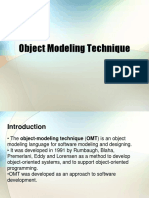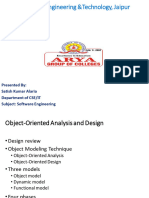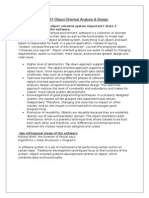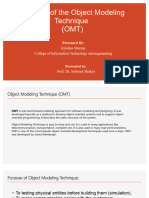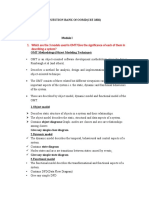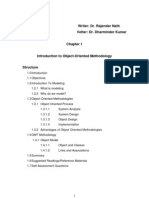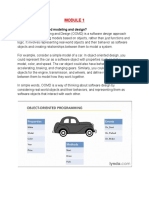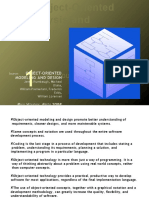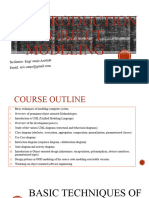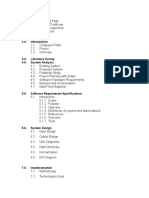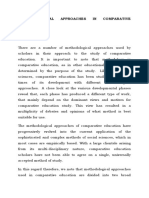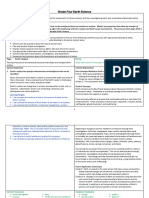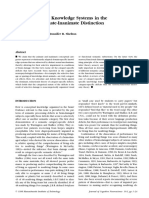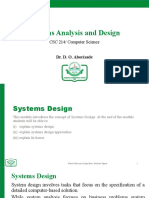0% found this document useful (0 votes)
95 views3 pagesOMT-object, Dynamic, Functional-3
The Object Modeling Technique (OMT) methodology consists of three models: object model, dynamic model, and functional model, which help in understanding and designing systems by detailing objects, their relationships, and interactions. The object model focuses on the static structure of the system, while the dynamic model addresses the sequencing of operations, and the functional model describes the computational structure. Together, these models provide a comprehensive framework for system analysis and design.
Uploaded by
khushi.bcastudent23.9480Copyright
© © All Rights Reserved
We take content rights seriously. If you suspect this is your content, claim it here.
Available Formats
Download as PDF, TXT or read online on Scribd
0% found this document useful (0 votes)
95 views3 pagesOMT-object, Dynamic, Functional-3
The Object Modeling Technique (OMT) methodology consists of three models: object model, dynamic model, and functional model, which help in understanding and designing systems by detailing objects, their relationships, and interactions. The object model focuses on the static structure of the system, while the dynamic model addresses the sequencing of operations, and the functional model describes the computational structure. Together, these models provide a comprehensive framework for system analysis and design.
Uploaded by
khushi.bcastudent23.9480Copyright
© © All Rights Reserved
We take content rights seriously. If you suspect this is your content, claim it here.
Available Formats
Download as PDF, TXT or read online on Scribd
/ 3

